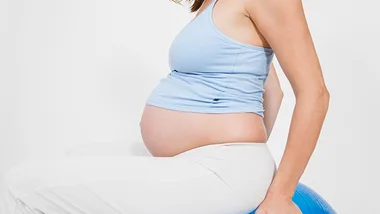Is it the baby or the mum? Or a mix of both? Scientists say they’ve taken a big step in working out who gets this party started…
Spicy curries, a bumpy car ride and sex are thought to kick it off, but exactly what starts labour and how has been a mystery. Now Australian researchers say they have made an important discovery regarding what exactly triggers the uterus to contract and push out a baby.
The researchers, from the University of Melbourne, Monash University, the Royal Women’s Hospital, Melbourne, and the Hunter Medical Research Institute in Newcastle, believe a protein is released by the body that turns off an ‘electrical switch’ in the uterus, allowing it to contract. This finding could lead to new drugs that induce labour in overweight women who don’t produce enough of this protein to start the chain reaction. But who’s to say the curries, sex and bumpy car rides still won’t work? At least two out of three of them are worth a try!
HOW DO I KNOW I AM IN LABOUR?
It might sound like a silly question, when you think the only answer is “because it will hurt A LOT!!” But as midwife and M&B expert Megan Baker explains, there are several signs apart from the apin of contractions that can indicate impending labour.
Upset stomach
Hormones released in early labour, which encourage your uterus to contract, may affect your bowels, so diarrhoea can be a sign bub is on the way.
Backache
Worse-than-usual back pain can mean labour is starting, especially in the case of women whose babies are in a posterior position (lying spine to spine).
A show
Passing pink-coloured mucus is a sign your body is preparing to give birth. Called ‘a show’, this is when the plug sealing the cervix comes away as the cervix starts to stretch. However, labour may not start for days.
Breaking waters
Whether it’s a trickle or a gush, when the amniotic sac that holds your baby breaks to release yellow or straw-coloured fluid, it’s time to call
the hospital or your doctor.
Contractions
Initially feeling like period pain or a dull backache, contractions become longer, stronger and regular as labour gets underway. If you haven’t done so already, call the hospital to check in with the midwives when contractions are about five minutes apart.
WHY LABOUR HURTS
Face it – having a baby can hurt, but knowing what’s causing the pain helps, as well as learning some ways to deal with it.
As Kirstie Alley famously put it in the movie Look Who’s Talking: “Why don’t you try squeezing something the size of a watermelon out of an opening the size of a lemon and see how hot you look?” Giving birth hurts. Fact.
But it’s not just down to the difference in size between your baby and her exit route. There’s also your baby’s position to consider. Then there are the contractions. At full term, your uterus is the largest muscle in your body, so when it contracts you’re going to feel it. Obstetrician and M&B expert Dr Vijay Roach explains: “The long contractions, lasting up to a minute with two to four minutes in between, restrict blood flow to the uterine muscles causing pain at the time. First-time mums usually perceive this pain as worse than those who’ve been through it before, probably because second and subsequent labours are more efficient and progressive.”
The experience of pain in labour varies for many reasons, including the rate of progress, the position of the baby, the health and fitness of the mother and psychological factors.
Many women feel less pain during the second stage of labour, when they push their baby out, compared with the longer first stage, when the cervix is stretching. “This is probably related to movement of the baby down the birth canal, with less resistance to the contraction of the uterine muscle” says Dr Roach.
According to childbirth educator, doula and hypnosis for birth practitioner Gabrielle Targett, the pain or ‘intensity’ can be positive. “It gives clues about the stage of labour you are in,” she says. “As a general rule, four contractions in 10 minutes mean you are in good, established labour. The regularity and intensity of the contractions triggers the release of oxytocin and endorphins, the hormones that help you to cope with the intensity of labour.”
Of course, the amount of pain we can take varies. Some experts say this is because of our physical make up, while others put it down to different mindsets or cultural differences. That’s why it’s important to approach labour with an open mind – you won’t know how the pain will affect you until you feel it.

